Test Bank Clinically Oriented Anatomy 6th Edition Moore – Agur – Dalley
$38.00
Test Bank Clinically Oriented Anatomy 6th Edition Moore – Agur – Dalley
- Description
- Reviews (0)
Description
You will receive this product immediate after placing the order
Success in nursing school is truly a journey. Spend less time learning worthless information and more time memorizing what you need to know. Our nursing test banks for sale are proven to generate results, regardless of your education level or any previous failures you may have experienced. Add this product to your cart and checkout to download this Test Bank Clinically Oriented Anatomy 6th Edition Moore – Agur – Dalley.
*** BELOW, IS A SAMPLE FROM THIS NURSING TEST BANK, YOU WILL RECEIVE THE CHAPTERS VIA PDF OR WORD DOCUMENT ***
CHAPTER 2:
1. Which vertebral level does the transumbilical plane pass through?
A) T10
B) T12
C) L3/L4 disc
D) L5/S1 disc
E) at the level of the sacral promontory
Ans: C
2. Camper’s and Scarpa’s fascia refer to the:
A) fascial layers of the abdominal wall that are deep to the peritoneum.
B) superficial and deep (respectively) fascial layers of the posterior abdominal wall.
C) superficial and deep layers (respectively) of the rectus sheath.
D) fatty and membranous layers (respectively) of the superficial fascia of the inferior anterior abdominal wall.
E) fatty and membranous fascial layers (respectively) of the perineum.
Ans: D
3. Most muscle fibers of the external oblique muscle:
A) run transversely.
B) run inferomedially from their superior attachment.
C) run inferolaterally from their superior attachment.
D) pass deep to the linea alba.
E) pass deep to the inguinal ligament.
Ans: B
4. The nerve supply to the muscles of the anterior abdominal wall:
A) pierces the peritoneum immediately prior to entering the deep surface of the muscle.
B) is derived from the sympathetic trunk.
C) travels between the internal oblique and transverses abdominis muscles.
D) also innervates the diaphragm.
E) is derived from sacral ventral rami.
Ans: C
5. Which of the following is incorrect pertaining to the rectus abdominis muscle or rectus sheath?
A) The linea alba separates (lies in the midline between) the two rectus muscles.
B) The attachments (tendinous insertions) between the muscle and the anterior layer of sheath account for the abdominal definition (ripples) evident when muscular individuals tense this muscle.
C) The posterior layer of the sheath is composed of the aponeuroses of the internal oblique and the transversalis fascia throughout the extent of the sheath.
D) The external oblique aponeurosis contributes to the anterior wall of the sheath throughout the craniocaudal extent of the sheath.
E) Transverse surgical incisions can be made in this muscle without resulting in muscle fiber necrosis.
Ans: C
6. The muscles of the anterior abdominal wall assist in all of the following activities except:
A) inspiration.
B) defecation.
C) sneezing.
D) vomiting.
E) parturition.
Ans: A
7. Ascites refers to:
A) uncontrollable diarrhea.
B) uncontrollable flatulence.
C) abnormal accumulation of fluid in the peritoneal cavity.
D) abdominal organ enlargement.
E) leakage of fluid through the umbilicus.
Ans: C
8. Which of the following is incorrect pertaining to the umbilicus?
A) Umbilical hernias are more common in women.
B) Umbilical eversion is associated with increased intraabdominal pressure.
C) Underlying the umbilicus is the umbilical ring.
D) All layers of the anterolateral abdominal wall fuse at the umbilicus.
E) The umbilicus is in the L1 dermatome.
Ans: E
9. Upon palpating the anterior abdominal wall of a patient, you notice an intense reflexive muscular contraction in the abdominal muscles. Which of the following is not correct pertaining to this sign?
A) It is called “guarding.”
B) It may indicate an inflamed appendix.
C) Functionally, these spasmodic muscular contractions are an attempt to protect the underlying viscera.
D) It is best observed when the patient is perfectly supine.
E) The impulses for muscular contractions are carried through the ventral rami of the inferior thoracic and first lumbar nerves.
Ans: D
10. Which of the following is not correct pertaining to a typical surgical incision used for an appendectomy?
A) The McBurney point is identified.
B) An almost transverse or an oblique (McBurney) incision may be used.
C) The subcostal nerve is identified and preserved.
D) The iliohypogastric nerve is identified and preserved.
E) If gridiron incisions are used, there is no loss of strength in the ability of the anterolateral abdominal muscles to resist intraabdominal pressure.
Ans: C
11. Endoscopic abdominal surgery:
A) requires a larger incision than traditional surgery and is only used for obese patients.
B) is more likely to result in incisional hernias.
C) requires less time for healing than conventional surgery.
D) refers to a procedure whereby the lower six thoracic nerves are anesthetized allowing the patient to be awake during abdominal surgery.
E) refers to a procedure whereby abdominal surgery is performed via instruments passed through the alimentary tract.
Ans: C
12. A transverse incision through the rectus abdominis muscle and both layers of the rectus sheath at the arcuate line would transect the:
A) inferior epigastric artery.
B) thoracoepigastric vein.
C) first lumbar artery.
D) ilioinguinal nerve.
E) T12 intercostal nerve.
Ans: A
13. Which of the following associations is incorrect?
A) median umbilical fold—urachus
B) medial umbilical folds—obliterated parts of umbilical arteries
C) lateral umbilical folds—inferior epigastric arteries
D) falciform ligament—connects internal aspect of superior abdominal wall to lesser omentum
E) falciform ligament—paraumbilical veins
Ans: D
14. Which of the following is incorrect pertaining to the inguinal ligament?
A) It is composed of the aponeurotic fibers of the external oblique muscle.
B) It extends primarily between the anterior superior iliac spine and the pubic tubercle.
C) It is often perforated by a direct inguinal hernia.
D) It has fibers that cross the midline to help form the reflected inguinal ligament.
E) It is paralleled deeply by the iliopubic tract, which is composed of transversalis fascia.
Ans: C
15. The following image depicts a physician palpating the:
A) fundus of the stomach.
B) pancreas.
C) inferior margin of the liver.
D) costodiaphragmatic recess.
E) transverse colon.
Ans: C
16. Which of the following is incorrect pertaining to the deep (internal) inguinal ring?
A) It is an opening in the peritoneum.
B) It is located lateral to the inferior epigastric artery.
C) It transmits the spermatic cord in males.
D) It transmits the round ligament of the uterus in females.
E) It forms the deep entrance to the inguinal canal.
Ans: A
17. Which of the following is incorrect pertaining to the inguinal canal?
A) It transmits an indirect inguinal hernia.
B) It is traversed prenatally by the processes vaginalis, which later occludes.
C) It is traversed prenatally by the primordial testis.
D) Its roof is formed by the inguinal ligament.
E) Its superficial opening is the superficial (external) inguinal ring.
Ans: D
18. Cryptorchidism refers to:
A) inflammation of the inguinal triangle.
B) an undescended testis.
C) an enlargement of the round ligament of the uterus.
D) fluid in the inguinal canal.
E) the abnormal descent of an ovary into the inguinal canal.
Ans: B
19. One of the standard tests of a newborn infant is to stroke the inside of its thigh to elicit the cremaster reflex. What would be the response you would expect to see?
A) twitching of the skin in the hypogastric region
B) closing of the labia
C) contraction of the dartos muscle
D) penile rigidity
E) testicular retraction
Ans: E
20. In examining a male patient you place your finger in his superficial inguinal ring and ask him to cough. You then feel a sudden impulse medial to your finger. You conclude that your patient most likely has:
A) a femoral hernia.
B) a direct inguinal hernia.
C) an undescended testis.
D) a supravesical hernia.
E) testicular cancer.
Ans: B
21. Which of the following is not true of a hydrocele?
A) It can be distinguished from a hematocele by transillumination.
B) It is typically associated with a direct inguinal hernia.
C) It refers to excess fluid in a persistent processus vaginalis.
D) It may be confined to the spermatic cord.
E) It may be associated with inflammation of the epididymis.
Ans: B
22. Which of the following associations is incorrect?
A) rete testis—opening of the ductus deferens
B) testicular arteries—arise from abdominal aorta
C) varicocele—dilation of the pampiniform plexus
D) epididymis—sperm maturation
E) anterior scrotum—innervated by branches from the ilioinguinal and genitofemoral nerves
Ans: A
23. While removing a cancerous testis, the surgeon inadvertently allowed fluid from the testis to flow over the incised skin of the scrotum. The surgeon should:
A) not be concerned about this accident.
B) be concerned about a potential spread of the cancer to the superficial inguinal lymph nodes.
C) be concerned about the potential spread of the cancer to lumbar lymph nodes.
D) be concerned about the potential spread of the cancer to perineal lymph nodes.
E) be concerned about the potential spread of the cancer to penile lymph nodes.
Ans: B
24. Technically, the peritoneal cavity:
A) contains all the intraperitoneal organs.
B) is a closed cavity in both sexes.
C) is the potential space between the parietal and visceral peritoneum.
D) is typically open to the testis in the male.
E) contains lymph nodes.
Ans: C
25. Which of the following associations is incorrect?
A) ruptured appendix—peritonitis
B) peritoneal adhesions—volvulus
C) withdrawal of urine from bladder—paracentesis
D) intraperitoneal injection—rapid rate of absorption
E) peritoneal dialysis—removal of wastes from abdominal cavity
Ans: C
26. Which of the following is incorrect pertaining to a mesentery?
A) It is sensitive to laceration near its attachment to organs.
B) It is a double-layer of peritoneum.
C) It transmits nerves and blood vessels to organs from the body wall.
D) It constitutes a region of continuity between visceral and parietal peritoneum.
E) It contains lymph nodes and vessels.
Ans: A
27. To minimize the spread of peritoneal fluid via the paracolic gutters from a lower abdominal infection, the patient is placed:
A) on his right side.
B) on his left side.
C) supine.
D) prone.
E) in an inclined position (head and trunk elevated at least 45 degrees).
Ans: E
28. The omental bursa:
A) is a completely sealed-off recess of the peritoneal cavity.
B) is located anterior to the stomach.
C) can contain pancreatic fluid following rupture of the pancreas.
D) has medial and lateral recesses.
E) contains the portal vein.
Ans: C
29. Which of the following is incorrect pertaining to the esophagus?
A) Typically it joins with the stomach at the T11 level.
B) GERD (gastroesophageal reflex disorder) is associated with pyrosis (heartburn).
C) Esophageal varices are associated with blockage of the inferior vena cava.
D) The esophagus is innervated by the vagal trunks and thoracic sympathetic splanchnic nerves.
E) Its abdominal part is typically supplied by the left gastric artery.
Ans: C
30. The superior mesenteric artery:
A) arises from the aorta at the T10 level.
B) is accompanied by the superior mesenteric vein on its right.
C) gives rise to a series of arterial arcades called vasa recta.
D) passes posterior to the horizontal part of the duodenum.
E) is accompanied by sympathetic fibers derived from lumbar splanchnic nerves.
Ans: B
31. Following an automobile accident, a female patient complains of colicky abdominal pain. She also has been vomiting and her abdomen is distended. Which of the following is the most likely cause of her pain and signs?
A) Her small bowel has been torn.
B) The accident freed a small clot from her aorta that subsequently entered and occluded the vasa recta supplying her ileum.
C) The sympathetic nerve supply to her small bowel has been injured.
D) Her parietal peritoneum has been lacerated.
E) The accident triggered appendicitis.
Ans: B
32. Which of the following is least likely pertaining to an ileal diverticulum (of Merkel)?
A) It occurs near the junction between the jejunum and the ileum.
B) It occurs on the antimesenteric border of the ileum.
C) It may have a cordlike attachment to the umbilicus.
D) If inflamed, it may produce symptoms that mimic those of appendicitis.
E) It may be present in both infants and adults.
Ans: A
33. Initially appendicitis manifests as diffuse pain in the periumbilical region and later as circumscribed pain in the right lower quadrant. Why?
A) Because the appendix swells with appendicitis so that it contacts both the anterior and posterior abdominal walls.
B) Because the pain is first conveyed via vagal parasympathetic fibers and then by somatic fibers in the parietal peritoneum of the abdominal wall.
C) Because the pain is first conveyed via sympathetic fibers that enter the spinal cord at the T10 level and then by somatic fibers in the parietal peritoneum of the abdominal wall.
D) Because the appendix first irritates the subcostal nerve and then the ilioinguinal nerve.
E) Because the most sensitive afferents of the appendix are those that are associated with the sympathetic fibers that enter the T10 level of the spinal cord, but later less sensitive afferents associated with the lower quadrant become activated.
Ans: C
34. The teniae coli:
A) are located along the jejunum.
B) compose the muscular wall of the appendix.
C) are found along the walls of the rectum.
D) are the most superficial part of the sphincter ani.
E) may be used during an appendectomy to locate the appendix.
Ans: E
35. The image following is an arteriogram of the superior mesenteric artery and its branches. The artery indicated by the arrow is the:
A) superior mesenteric.
B) middle colic.
C) inferior pancreaticoduodenal.
D) first jejunal branch.
E) ileocolic.
Ans: E
36. Which of the following is not correct for the sigmoid arteries?
A) They traverse the sigmoid mesocolon.
B) They help to form the marginal artery.
C) They arise from the inferior mesenteric artery.
D) They typically divide into ascending and descending branches.
E) They are the main source of blood to the left ureter.
Ans: E
37. In the following barium-enhanced radiograph, the arrow points to the:
A) sigmoid colon.
B) ascending colon.
C) descending colon.
D) duodenum.
E) cecum.
Ans: A
38. Which of the following associations is incorrect?
A) Crohn disease—chronic inflammation of the colon and rectum
B) colonoscopy—visualization of the interior of the colon
C) diverticulosis—primarily affects infants
D) diverticulitis—hemorrhage
E) tumors of the colon—mainly occur in the rectum
Ans: C
39. Your friend was in an automobile accident in which his spleen was ruptured. Which of the following is least likely based on this knowledge?
A) The accident caused trauma to the left upper abdominal quadrant.
B) The spleen must be repaired or your friend will die.
C) The rupture resulted in the escape of red blood cells into the peritoneal cavity.
D) The inferior lobe of the left lung may also have been injured.
E) Ribs 9–11 on the left side were fractured.
Ans: B
40. Which of the following is incorrect pertaining to the pancreas?
A) The superior mesenteric artery lies anterior to its neck.
B) Its head is embraced mainly by the descending part of the duodenum.
C) It is retroperitoneal.
D) Its main duct joins with the common bile duct before entering the duodenum.
E) It is partially supplied by branches from the splenic artery.
Ans: A
41. Which of the following associations is incorrect?
A) gallstone in hepatopancreatic ampulla—pancreatitis
B) sudden, severe, forceful compression of the abdomen—rupture of the pancreas
C) pancreatectomy—removal of most of the pancreas
D) cancer of the head of the pancreas—jaundice
E) pancreatic cancer—rarely metastasizes
Ans: E
42. In the following enhanced radiograph of the biliary system, the arrow points to the:
A) cystic duct.
B) left hepatic duct.
C) common hepatic duct.
D) (common) bile duct.
E) pancreatic duct.
Ans: B
43. In the following enhanced CT scan of the abdomen, the arrow points to the:
A) spleen.
B) liver.
C) stomach.
D) left kidney.
E) inferior lobe of the left lung.
Ans: A
44. The hepatorenal recess (Morison pouch):
A) is part of the omental bursa.
B) is in the subphrenic recess.
C) receives infected fluids draining from the omental bursa in the supine position.
D) is a potential space in the hepatorenal ligament.
E) is extraperitoneal.
Ans: C
45. The hepatoduodenal ligament:
A) is part of the greater omentum.
B) contains the portal vein, common bile duct, and hepatic artery.
C) contains the round ligament of the liver.
D) attaches to the bare area of the liver.
E) attaches to the neck of the gallbladder.
Ans: B
46. In the following MRI of the abdomen, the arrow points to the:
A) aorta.
B) splenic vein.
C) celiac artery.
D) right gastric artery.
E) inferior vena cava.
Ans: E
47. Which of the following is incorrect pertaining to the portal vein?
A) It is typically formed by the superior mesenteric and splenic veins posterior to the neck of the pancreas.
B) It carries more of the total blood volume reaching the liver than any other vessel.
C) It is typically the most anterior of the structures within the hepatoduodenal ligament.
D) It divides into right and left branches at the porta hepatis.
E) It may spread cancer to the liver.
Ans: C
48. Which of the following is incorrect pertaining to lymph drainage of the liver?
A) There are both superficial and deep lymphatic vessels.
B) Some drainage is via vessels passing directly to phrenic nodes.
C) Some drainage is to vessels within the falciform ligament.
D) Hepatic nodes are located in the greater omentum.
E) Metastases spread via the lymph system will eventually reach the celiac nodes.
Ans: D
49. What structure traverses the opening indicated by the arrow in the following figure?
A) esophagus
B) inferior vena cava
C) aorta
D) psoas major
E) quadratus lumborum
Ans: C
50. Cirrhosis of the liver is associated with all of the following except:
A) softening of the liver.
B) destruction of hepatocytes.
C) portal hypertension.
D) alcoholism.
E) enlargement of the liver.
Ans: A
51. When the sphincter of the bile duct contracts:
A) bile is propelled into the duodenum.
B) bile is forced into the gallbladder for concentration and storage.
C) pancreatic juices are prevented from entering the duodenum.
D) bile flow in the common hepatic duct is occluded.
E) bile flow in the cystic duct is occluded.
Ans: B
52. Which of the following is incorrect pertaining to the gall bladder?
A) Some venous drainage is directly into the visceral surface of the liver.
B) Cholecystitis can result from an impacted gallstone.
C) A gallstone lodged in the cystic duct causes intense spasmodic pain.
D) During cholecystectomy surgeons typically ligate the left hepatic artery.
E) The infundibulum of the gall bladder is a pouch that appears between the neck and the cystic duct in diseased states.
Ans: D
53. In the following enhanced CT of the abdomen, the arrow points to the:
A) lumbar artery.
B) right crus of the diaphragm.
C) psoas major.
D) quadratus lumborum.
E) inferior pole of the right kidney.
Ans: B
54. Which of the following is not associated with portal hypertension?
A) esophageal varices
B) caput medusae
C) increased blood flow in the inferior vena cava
D) surgically making a splenorenal anastomosis
E) surgically connecting the portal vein to the inferior vena cava
Ans: C
55. In the following renal arteriogram, the arrow points to:
A) the inferior phrenic artery.
B) rib 10.
C) rib 11.
D) rib 12.
E) an abnormal lumbar rib.
Ans: D
56. The renal fascia:
A) separates the kidney from the ureter.
B) usually prevents pus from a perinephric abscess from spreading to the contralateral kidney.
C) prevents the kidney from moving during respiration.
D) holds the renal artery and vein together.
E) is composed of peritoneum.
Ans: B
57. In renal transplantation the:
A) suprarenal gland is transplanted with the kidney.
B) renal artery and vein are sutured to the aorta and inferior vena cava, respectively.
C) kidney is sutured to the diaphragm to maintain its position.
D) transplanted ureter is sutured to the patient’s ureter.
E) kidney is placed in the iliac fossa of the greater pelvis.
Ans: E
58. Which of the following is incorrect pertaining to the kidneys?
A) The right kidney is related anteriorly to the liver, duodenum, and ascending colon.
B) The left kidney is related anteriorly to stomach, spleen, pancreas, jejunum, and descending colon.
C) The renal pelvis is the junction between the renal artery and the renal hilum.
D) Extension of the hip joint may increase pain associated with kidney disease.
E) Both kidneys are retroperitoneal.
Ans: C
59. You see a female patient in the emergency room with severe, intermittent “loin” (lumbar region) pain who is also having great difficulty urinating. Your most likely first diagnosis is:
A) kidney disease.
B) ureteric ischemia.
C) ruptured renal artery.
D) ectopic pregnancy.
E) ureteric calculus.
Ans: E
60. The suprarenal glands:
A) are typically each drained by one vein.
B) are each supplied by one artery that arises from the abdominal aorta.
C) are each supplied by one artery that arises from a renal artery.
D) each receive blood from and drain directly into the kidney.
E) receive sympathetic innervation via the lumbar splanchnic nerves.
Ans: A
61. Which of the following is incorrect pertaining to the celiac plexus?
A) It surrounds the root of the celiac arterial trunk.
B) It contains both sympathetic and parasympathetic fibers.
C) It supplies the stomach.
D) It supplies the descending colon.
E) It supplies the gallbladder.
Ans: D
62. In the following MRI of the abdomen, the arrow points to the:
A) spleen.
B) right kidney.
C) stomach.
D) transverse colon.
E) duodenum.
Ans: B
63. Which of the following is incorrect pertaining to the diaphragm?
A) Its central tendon is in contact with the fibrous pericardium.
B) Its crura attach to the inferior six costal cartilages.
C) It is partially supplied with blood via branches of the internal thoracic artery.
D) It is at its most superior level when a person is supine.
E) Irritation of the diaphragmatic pleura can result in pain that is referred to the shoulder.
Ans: B
64. A positive psoas sign:
A) could indicate liver cancer.
B) means that the thigh can be extended more than 30 degrees.
C) means that the psoas muscle is normal in strength.
D) could indicate pancreatitis.
E) indicates a normal psoas reflex.
Ans: D
65. The ilioinguinal and iliohypogastric nerves:
A) innervate the psoas muscle.
B) pass posterior to the quadratus lumborum.
C) are both L1 ventral rami.
D) together form the lumbosacral trunk.
E) supply the adductor muscles of the thigh.
Ans: C
66. Which of the following is not an anterior relation of the abdominal aorta?
A) pancreas
B) horizontal part of duodenum
C) left kidney
D) coils of jejunum and ileum
E) root of the mesentery
Ans: B
67. The inferior vena cava:
A) begins anterior to the L5 vertebrae.
B) receives the right testicular vein.
C) is shorter than the abdominal aorta.
D) passes into the thorax at the T10 level.
E) is the only route by which blood from the inferior part of the body can return to the heart.
Ans: B
Do you have any questions? Would you like a sample sent to you? Just send us an email at inquiry@testbanksafe.com (no spaces). We will respond as soon as possible.
Be the first to review “Test Bank Clinically Oriented Anatomy 6th Edition Moore – Agur – Dalley”
You must be logged in to post a review.




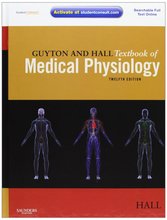
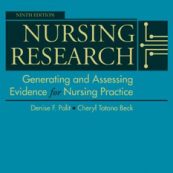

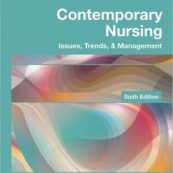
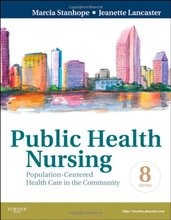
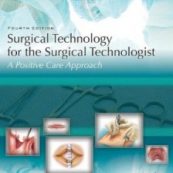


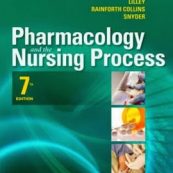

Reviews
There are no reviews yet.